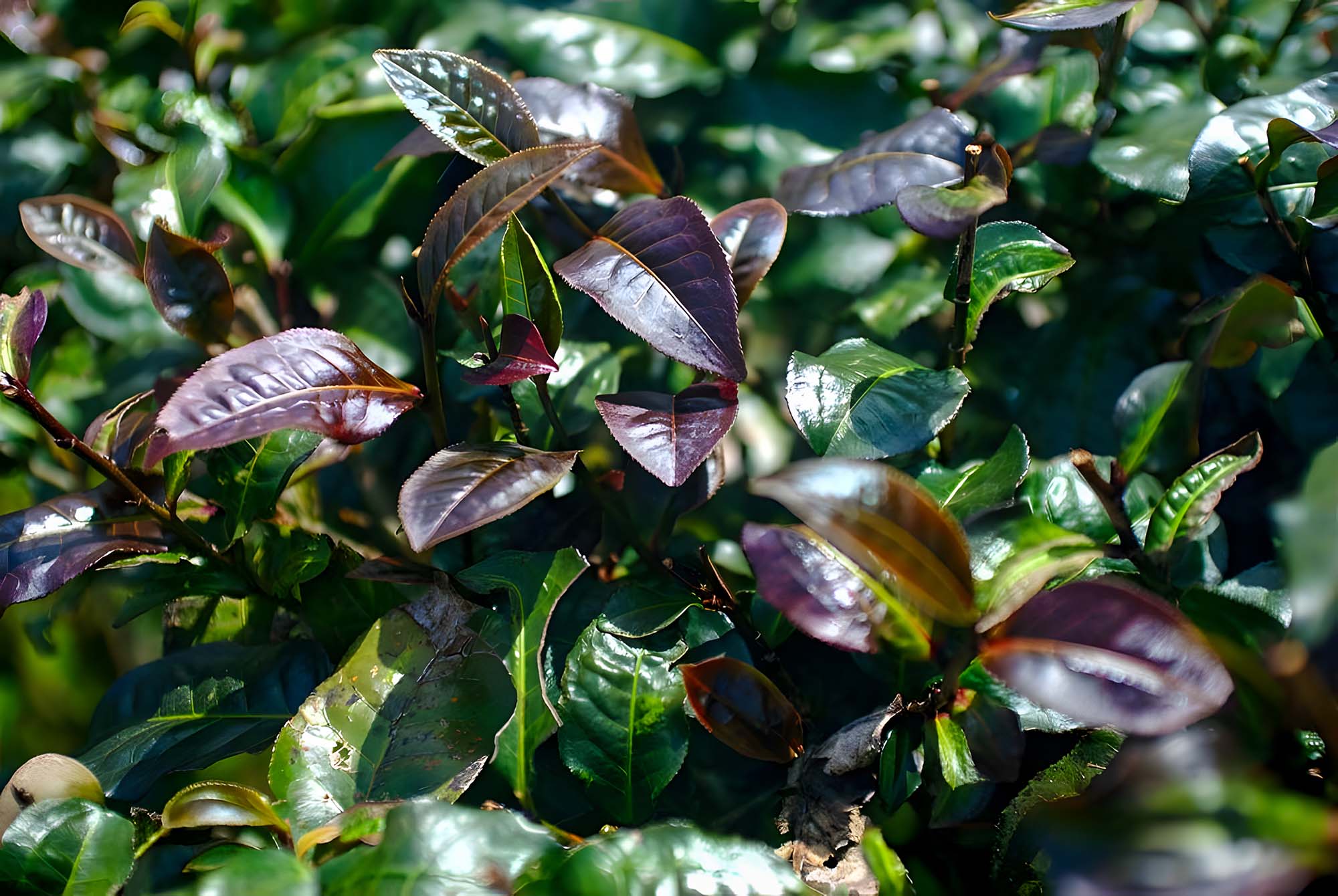Purple Tea — What Is This Mystery?
In previous posts, I’ve mentioned purple teas (Zi Cha) — now it’s time to dive deeper.
The purple color of the leaves is due to anthocyanins — flavonoid pigments that also give red, purple, pink, blue, and violet flowers and ripe fruits their color. These pigments are glycosides: their molecules consist of a non-sugar part (aglycone) and a sugar residue. Tea plants contain aglycones (anthocyanidins) such as pelargonidin, cyanidin, delphinidin, peonidin, malvidin, and others. Anthocyanins are present even in regular green-leaf cultivars, but only in trace amounts—about 0.01%, meaning the dominant green color from chlorophyll remains. In purple-leaf varieties, the concentration is 50–100 times higher (0.5–1%), giving them their characteristic hue. These pigments shift color depending on the type of anthocyanidin, the acidity of the cell sap, and the presence of metal ions such as iron, aluminum, magnesium, molybdenum, and tungsten. The final leaf color is influenced not only by anthocyanins but also by the ratio of chlorophyll a and b and the growing conditions.
Only about 1–2% of tea trees naturally produce purple leaves. They are more commonly found in wild-growing trees, which makes sense — over centuries, cultivated tea plantations primarily selected the standard green-leaf varieties. As a result, purple-leafed teas are most prevalent in Yunnan, where wild tea still plays a significant role in the tea industry. In most cases, the purple pigment appears in buds and the first 2–3 leaves, though in rare cases, entire trees can develop fully purple foliage, depending on terroir.
The synthesis of anthocyanins increases under stress factors—extreme temperatures, drought, and, most notably, ultraviolet radiation. This pigment acts as a natural sunscreen for the plant, partially compensating for the reduced chlorophyll production that occurs under intense sunlight. Growing altitude is key, as tea trees at high elevations receive up to eight times more UV radiation than those on lower plains.
Health Benefits of Purple Tea Research indicates that anthocyanins have strong antioxidant properties. They are believed to aid in the treatment of skin diseases, help prevent diabetes, and support mucosal health. Additionally, some studies suggest that purple tea may be even more effective than regular tea in regulating high blood pressure.
Purple Tea’s Evolution Until the late 20th century, purple tea leaves were not seen as anything special—they were either ignored or blended with green material in the production of sheng pu'er. It was only in the late 20th and early 21st centuries that purple tea began attracting interest as a separate category, with experimentation in its processing.
Three Types of Purple Tea Material
-
Zi Ya (Purple Buds, 紫芽) – A natural mutation of tea trees. Due to its rarity, it tends to be more expensive.
-
Zi Juan (Purple Grace, 紫娟) – A cultivar developed in the 1990s in Yunnan by crossing a Fujian purple variety with Yunnan assamica. The ancestor of this variety was a unique purple-leafed tree discovered in 1985 among 600,000 seedlings at the Yunnan Tea Research Institute plantation. Unlike the natural mutation of Zi Ya, this cultivar consistently produces purple-colored leaves on all growth. However, its taste often lacks complexity, resembling teas meant for mass production rather than wild or traditional varieties.
-
Zi Cha (Purple Tea, 紫茶) – Tea made from Zi Ya. This category usually includes wild-growing (Ye Sheng, 野生) trees. Zi Cha is known for its enhanced oiliness in flavor.
How Does Purple Tea Look and Taste? After compression, purple tea material darkens to an almost black shade, while its infusion takes on a golden-yellow hue. The flavor profile features less of the typical pu'er astringency, replaced by a distinct sweetness reminiscent of pomegranate peel or mangosteen. However, the sensory experience of purple tea is highly nuanced — it’s something that truly must be tasted firsthand!
